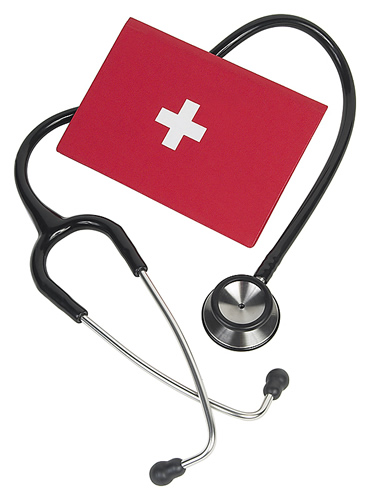Social Work Services
Page Navigation
- Frontier High School
- Eating Disorders
-
Eating Disorders
WHAT IS AN EATING DISORDER?Eating disorders —such as anorexia, bulimia, and binge eating disorder—includes extreme emotions, attitudes, and behaviors surrounding weight and food issues. Eating disorders are serious emotional and physical problems that can have life-threatening consequences for both females and males. **Source: www.eatingdisorderswny.org
WHAT ARE THE TYPES OF EATING DISORDERS?Anorexia Nervosa
Anorexia Nervosa is a serious, potentially life-threatening eating disorder characterized by self-starvation and excessive weight loss. Health Consequences of Anorexia Nervosa: In anorexia nervosa’s cycle of self-starvation, the body is denied the essential nutrients it needs to function normally. Thus, the body is forced to slow down all of its processes to conserve energy, resulting in serious medical consequences:
Health Consequences of Anorexia Nervosa: In anorexia nervosa’s cycle of self-starvation, the body is denied the essential nutrients it needs to function normally. Thus, the body is forced to slow down all of its processes to conserve energy, resulting in serious medical consequences:
• Abnormally slow heart rate and low blood pressure, which mean that the heart muscle is changing. The risk for heart failure rises as the heart rate and blood pressure levels sink lower and lower.
• Reduction of bone density (osteoporosis), which results in dry, brittle bones.
• Muscle loss and weakness.
• Severe dehydration, which can result in kidney failure.
• Fainting, fatigue, and overall weakness.
• Dry hair and skin; hair loss is common.
• Growth of a downy layer of hair called lanugo all over the body, including the face, in an effort to keep the body warm.
Binge Eating Disorder
Binge Eating Disorder (BED) is a type of eating disorder not otherwise specified and is characterized by recurrent binge eating without the regular use of compensatory measures to counter the binge eating. Health Consequences of Binge Eating Disorder: Binge eating disorder often results in many of the same health risks associated with clinical obesity. Some of the potential health consequences of binge eating disorder include:
Health Consequences of Binge Eating Disorder: Binge eating disorder often results in many of the same health risks associated with clinical obesity. Some of the potential health consequences of binge eating disorder include:
– High blood pressure.
– High cholesterol levels.
– Heart disease as a result of elevated triglyceride levels.
– Type II diabetes mellitus.
– Gallbladder disease.
**Source: National Eating Disorders Association 2005 (www.NationalEatingDisoders.org)Bulimia Nervosa
Bulimia Nervosa is a serious, potentially life-threatening eating disorder characterized by a cycle of bingeing and compensatory behaviors such as self-induced vomiting designed to undo or compensate for the effects of binge eating. Health Consequences of Bulimia Nervosa: The recurrent binge-and-purge cycles of bulimia can affect the entire digestive system and can lead to electrolyte and chemical imbalances in the body that affect the heart and other major organ functions. Some of the health consequences of bulimia nervosa include:
Health Consequences of Bulimia Nervosa: The recurrent binge-and-purge cycles of bulimia can affect the entire digestive system and can lead to electrolyte and chemical imbalances in the body that affect the heart and other major organ functions. Some of the health consequences of bulimia nervosa include: – Electrolyte imbalances that can lead to irregular heartbeats and possibly heart failure and death. Electrolyte imbalance is caused by dehydration and loss of potassium, sodium and chloride from the body as a result of purging behaviors.
– Potential for gastric rupture during periods of bingeing.
– Inflammation and possible rupture of the esophagus from frequent vomiting.
– Tooth decay and staining from stomach acids released during frequent vomiting.
– Chronic irregular bowel movements and constipation as a result of laxative abuse.
– Peptic ulcers and pancreatitis
**Source: National Eating Disorders Association 2005 (www.NationalEatingDisorders.org) WHAT ARE THE SIGNS/ SYMPTOMS ?
WHAT ARE THE SIGNS/ SYMPTOMS ?Symptoms of Anorexia Nervosa
Physical
Dramatic weight loss
Slow heart rate
Low blood pressure
Low body temperature
Brittle hair and finger nails
Hair loss
Dry skin & dehydration
Growth of lanugo (soft furry hair on face, back & arms)
Amenorrhea (menstrual period stops)
Slow or stunted growthEmotional
Depression
Anxiety or nervousness
Distorted body image
Intense fear of gaining weight
Low self-esteem
Withdrawal from friends and activities
Thinking about food most of the timeSymptoms of Bulimia Nervosa
Physical
Electrolyte problems
Irregular menstrual periods
Dehydration
Swollen face (fluid retention)
Sore throat
Tooth decay/loss
Dry, flakey skin
Heart arrhythmias (due to potassium loss from vomiting)
Constipation
Body weight is typically normalEmotional
Depression
Shame or Guilt
Anxiety
Fear of weight gain
Withdrawal from friends
**Source: www.youngwomenshealth.orgTIPS FOR TEENS:
One way you can have a healthy relationship with your body is by learning to view it in a positive way. Here is a list of ten suggestions for you to consider:
1. Appreciate all that your body can do. Every day your body carries you closer to your dreams. Celebrate all of the amazing things your body does for you --running, dancing, breathing, laughing, dreaming, etc.
2. Keep a top-10 list of things you like about yourself -- things that aren’t related to how much you weigh or what you look like. Read your list often. Add to it as you become aware of more things to like about you.
3. Remind yourself that “true beauty” is not simply skin-deep. When you feel good about yourself and who you are, you carry yourself with a sense of confidence, self-acceptance, and openness that makes you beautiful regardless of whether you physically look like a supermodel. Beauty is a state of mind, not a state of your body.
4. Look at yourself as a whole person. When you see yourself in a mirror or in your mind, choose not to focus on specific body parts. See yourself as you want others to see you -- as a whole person.
5. Surround yourself with positive people. It is easier to feel good about yourself and your body when you are around others who are supportive and who recognize the importance of liking yourself just as you naturally are.
6. Shut down those voices in your head that tell you your body is not “right” or that you are a “bad” person. You can overpower those negative thoughts with positive ones. The next time you start to tear yourself down, build yourself back up with a few quick affirmations that work for you.
7. Wear clothes that are comfortable and that make you feel good about your body. Work with your body, not against it.
8. Become a critical viewer of social and media messages. Pay attention to images, slogans, or attitudes that make you feel bad about yourself or your body. Protest these messages: write a letter to the advertiser or talk back to the image or message.
9. Do something nice for yourself -- something that lets your body know you appreciate it. Take a bubble bath, make time for a nap, find a peaceful place outside to relax.
10. Use the time and energy that you might have spent worrying about food, calories, and your weight to do something to help others. Sometimes reaching out to other people can help you feel better about yourself and can make a positive change in our world.
**Source: National Eating Disorders Association 2005 (www.NationalEatingDisoders.org)TIPS FOR PARENTS:10 Things Parents Can Do to Help Prevent Eating Disorders
By: Michael Levine, PhD
1. Consider your thoughts, attitudes, and behaviors toward your own body and the way that these beliefs have been shaped by the forces of weightism and sexism. Then educate your children about (a) the genetic basis for the natural diversity of human body shapes and sizes and (b) the nature and ugliness of prejudice. Make an effort to maintain positive attitudes and healthy behaviors. Children learn from the things you say and do!2. Examine closely your dreams and goals for your children and other loved ones. Are you over- emphasizing beauty and body shape, particularly for girls? Avoid conveying an attitude which says in effect, “I will like you more if you lose weight, don’t eat so much, look more like the slender models in ads, fit into smaller clothes, etc.” Decide what you can do and what you can stop doing to reduce the teasing, criticism, blaming, staring, etc. that reinforce the idea that larger or fatter is “bad” and smaller or thinner is “good.”
3. Learn about and discuss with your sons and daughters (a) the dangers of trying to alter one’s body shape through dieting, (b) the value of moderate exercise for health, and (c) the importance of eating a variety of foods in well-balanced meals consumed at least three times a day.
Avoid categorizing and labeling foods (e.g. good/bad or safe/dangerous). All foods can be
eaten in moderation. Be a good role model in regard to sensible eating, exercise, and self-acceptance.4. Make a commitment not to avoid activities (such as swimming, sunbathing, dancing, etc.) simply because they call attention to your weight and shape. Refuse to wear clothes that are uncomfortable or that you don’t like but wear simply because they divert attention from your weight or shape.
5. Make a commitment to exercise for the joy of feeling your body move and grow stronger, not to purge fat from your body or to compensate for calories, power, excitement, popularity, or perfection.
6. Practice taking people seriously for what they say, feel, and do, not for how slender or “well put together” they appear.
7. Help children appreciate and resist the ways in which television, magazines, and other media distort the true diversity of human body types and imply that a slender body means power, excitement, popularity, or perfection.
8. Educate boys and girls about various forms of prejudice, including weightism, and help them understand their responsibilities for preventing them.
9. Encourage your children to be active and to enjoy what their bodies can do and feel like. Do not limit their caloric intake unless a physician requests that you do this because of a medical problem.
10. Do whatever you can to promote the self-esteem and self-respect of all of your children in intellectual, athletic, and social endeavors. Give boys and girls the same opportunities and encouragement. Be careful not to suggest that females are less important than males, e.g., by exempting males from housework or childcare. A well-rounded sense of self and solid self-esteem are perhaps the best antidotes to dieting and disordered eating.
WHAT CAUSES EATING DISORDERS?
While eating disorders may begin with preoccupations with food and weight, they are most often about much more than food. People with eating disorders often use food and the control of food in an attempt to compensate for feelings and emotions that may otherwise seem over-whelming. For some, dieting, bingeing, and purging may begin as a way to cope with painful emotions and to feel in control of one’s life, but ultimately, these behaviors will damage a person’s physical and emotional health, self-esteem, and sense of competence and control.
Psychological Factors that can Contribute to Eating Disorders:
• Low self-esteem
• Feelings of inadequacy or lack of control in life
• Depression, anxiety, anger, or loneliness
Interpersonal Factors that can Contribute to Eating Disorders:
• Troubled family and personal relationships
• Difficulty expressing emotions and feelings
• History of being teased or ridiculed based on size or weight
• History of physical or sexual abuse
Social Factors that can Contribute to Eating Disorders:
• Cultural pressures that glorify “thinness” and place value on obtaining the “perfect body”
• Narrow definitions of beauty that include only women and men of specific body weights and shapes
• Cultural norms that value people on the basis of physical appearance and not inner qualities and strengths
Biological Factors that can Contribute to Eating Disorders:
• Scientists are still researching possible biochemical or biological causes of eating disorders. In some individuals with eating disorders, certain chemicals in the brain that control hunger, appetite, and digestion have been found to be unbalanced. The exact meaning and implications of these imbalances remains under investigation.
• Eating disorders often run in families. Current research is indicates that there are significant genetic contributions to eating disorders.
Eating disorders are complex conditions that can arise from a variety of potential causes. Once started, however, they can create a self-perpetuating cycle of physical and emotional destruction.
Professional help is recommended in the treatment of eating disorders.
**Source: National Eating Disorders Association 2005 (www.NationalEatingDisoders.org)STATISTICS
Age of Onset
10% report onset at 10 years or younger
33% report onset between the ages of 11-15
43% report onset between the ages of 16-20
86% report onset of illness by the age of 20
Approximately 7 million girls and women struggle with eating disorders
Approximately 1 million boys and men struggle with eating disorders
**Source: Avalon Eating DisordersOn Dieting
* Over one-half of teenage girls and nearly one-third of teenage boys use unhealthy weight control behaviors such as skipping meals, fasting, smoking cigarettes, vomiting, and taking laxatives (Neumark-Sztainer, 2005).
* Girls who diet frequently are 12 times as likely to binge as girls who don’t diet (Neumark-Sztainer, 2005).
* 42% of 1st-3rd grade girls want to be thinner (Collins, 1991).
* 81% of 10 year olds are afraid of being fat (Mellin et al., 1991).
* The average American woman is 5’4” tall and weighs 140 pounds. The average American model is 5’11” tall and weighs 117 pounds.
* Most fashion models are thinner than 98% of American women (Smolak, 1996).
* 91% of women recently surveyed on a college campus had attempted to control their weight through dieting, 22% dieted “often” or “always” (Kurth et al., 1995).
* 95% of all dieters will regain their lost weight in 1-5 years (Grodstein, et al., 1996).
* 35% of “normal dieters” progress to pathological dieting. Of those, 20-25% progress to partial or full-syndrome eating disorders (Shisslak & Crago, 1995).
**Source: National Eating Disorders Association 2005 (www.NationalEatingDisoders.org)

